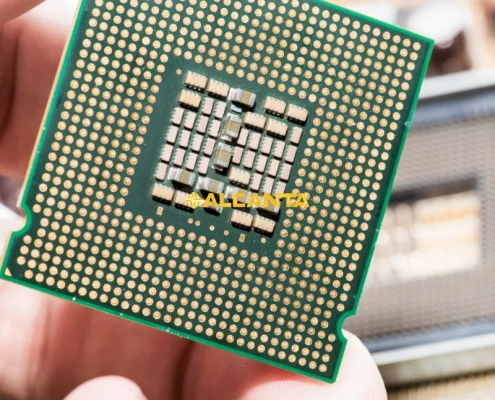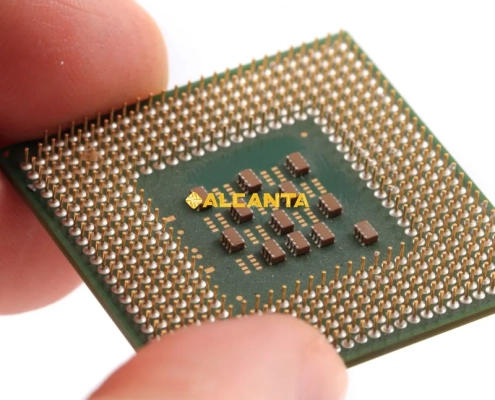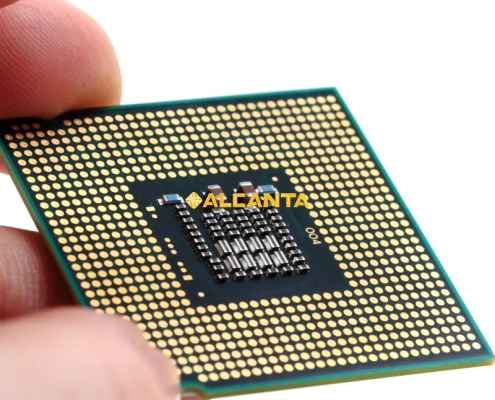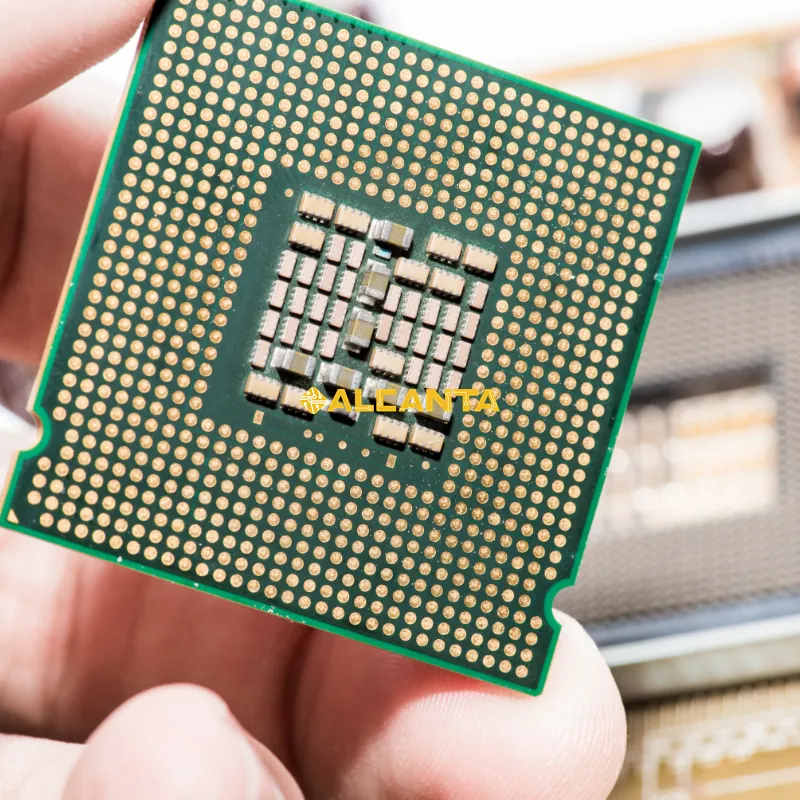Innovations in PGA Package Design and Functionality
Introduction: PGA Package, short for Pin Grid Array, stands as a cornerstone in modern computer hardware, boasting significance and wide-ranging applications. As a pivotal packaging technology, PGA Package facilitates the connection between the integrated circuit and the motherboard through an array of pins, ensuring efficient data transmission and processing. Its role in modern computer hardware cannot be overstated, serving as the backbone for CPUs, GPUs, and various other processors. The importance of PGA Package lies in its ability to provide a reliable and durable interface, enabling seamless integration and functionality within electronic devices. In this blog, we delve deeper into the intricacies of PGA Package, exploring its components, applications, advantages, and future prospects in the ever-evolving landscape of technology.
Basic Concept of PGA Package
Components of PGA Package
- Integrated Circuit (IC) Chip: The IC chip is the central component of the PGA Package, containing the electronic circuitry responsible for data processing and functionality. It comprises transistors, resistors, capacitors, and other semiconductor devices fabricated on a silicon wafer.
Function and Purpose: The IC chip serves as the brain of the electronic device, executing instructions and performing computations. It is mounted onto the PGA Package substrate and connected to the external environment through the pins.
- Pins: The pins of the PGA Package are metallic protrusions arranged in a grid pattern on the underside of the IC chip. These pins establish electrical connections between the IC chip and the motherboard or substrate.
Function and Purpose: The primary function of the pins is to transmit electrical signals between the IC chip and external components. They facilitate data transfer, power distribution, and communication between the integrated circuit and the rest of the system.
- PGA Package Substrate: The PGA Package substrate is a supporting material that houses the IC chip and provides mechanical and electrical stability to the package. It is typically made of materials such as fiberglass-reinforced epoxy or ceramic.
Function and Purpose: The PGA Package substrate serves as a platform for mounting the IC chip and connecting it to the pins. It also provides insulation and protection for the underlying circuitry. Additionally, the substrate facilitates the routing of electrical signals between the IC chip and the motherboard, ensuring reliable communication and operation of the device.
The components of PGA Package work together to enable the proper functioning and connectivity of electronic devices. The IC chip serves as the processing unit, while the pins establish electrical connections, and the substrate provides structural support and signal routing capabilities. Each component plays a crucial role in ensuring the reliability and performance of the PGA Package in various applications.
Applications of PGA Package
- CPUs, GPUs, and Other Processors: PGA Package finds extensive use in central processing units (CPUs), graphics processing units (GPUs), and various other types of processors. These components require a reliable packaging solution to connect the integrated circuit (IC) chip to the motherboard or substrate effectively. PGA Package offers robust mechanical connections and efficient signal transmission capabilities, making it suitable for high-performance computing applications. The substrate material in PGA Package provides mechanical support and electrical insulation, ensuring the integrity and reliability of the package in demanding operating conditions.
- Networking Equipment: PGA Package is also utilized in networking equipment such as routers, switches, and network interface cards (NICs). These devices require efficient data processing and communication capabilities to handle large volumes of network traffic. PGA Package facilitates the integration of high-speed processors and communication interfaces, enabling reliable and high-performance networking solutions. The substrate material in PGA Package plays a crucial role in maintaining signal integrity and minimizing electromagnetic interference, ensuring optimal performance in networking environments.
- Communication Devices: PGA Package is commonly employed in communication devices such as smartphones, tablets, and wireless routers. These devices require compact and reliable packaging solutions to accommodate multiple integrated circuits and communication interfaces within limited space constraints. PGA Package offers a compact form factor and efficient signal routing capabilities, making it suitable for miniaturized communication devices. The substrate material in PGA Package provides mechanical support and thermal management, ensuring stable operation and prolonged lifespan of communication devices.
Advantages and Disadvantages of PGA Package
| Aspect | PGA Package | Other Packaging Technologies |
| Heat Dissipation | Excellent heat dissipation due to protruding pins and substrate material providing thermal management. | Heat dissipation may vary depending on the specific technology; may not offer as efficient heat dissipation as PGA Package. |
| Maintainability | Individual pins can be easily replaced, enhancing maintenance and repairability. | Maintenance and repair processes may be more complex, depending on the technology used. |
| Size Constraints | Relatively larger size due to protruding pins; may limit compactness in some applications. | May offer a more compact form factor, suitable for space-constrained applications. |
| Soldering Difficulty | Soldering pins onto the motherboard may be more challenging, requiring precise alignment and specialized equipment. | Soldering process may be simpler, especially in technologies such as Ball Grid Array (BGA) or Land Grid Array (LGA). |
| Electrical Performance | Efficient signal transmission due to the direct connection between pins and substrate. | Signal transmission may vary depending on the technology used; may not offer as direct connection as PGA Package. |
| Reliability | Robust mechanical connections and efficient signal transmission enhance overall reliability. | Reliability may vary depending on the specific technology and application requirements. |
Trends in PGA Package Development
- Packaging Density: Future trends in PGA Package technology are expected to focus on increasing packaging density to accommodate more components within a smaller footprint. This involves shrinking the size of the PGA Package while maintaining or even enhancing its performance and reliability. Advances in microfabrication techniques and materials science are driving innovations in packaging density, enabling the integration of more functionalities into electronic devices.
- Material Innovations: Material innovations play a crucial role in enhancing the performance and reliability of PGA Package technology. Researchers are exploring novel materials with improved thermal conductivity, mechanical strength, and electrical properties for the substrate and other components of PGA Package. These advancements enable better heat dissipation, signal transmission, and overall durability, addressing the evolving requirements of electronic devices in various applications.
Potential Applications
- Artificial Intelligence (AI): PGA Package holds significant potential in the field of artificial intelligence (AI) by enabling the integration of high-performance processors and specialized accelerators for AI algorithms. As AI applications continue to proliferate in various industries, such as healthcare, automotive, and finance, PGA Package technology can provide the necessary computational power and efficiency required for AI inference and training tasks. The PGA Package substrate plays a critical role in ensuring the reliability and performance of AI-enabled devices in real-world applications.
- Internet of Things (IoT): In the realm of Internet of Things (IoT), PGA Package technology offers opportunities for the integration of sensors, microcontrollers, and wireless communication modules into compact and energy-efficient devices. These IoT devices require reliable and robust packaging solutions to withstand harsh operating conditions and ensure long-term performance. PGA Package, with its versatile design and efficient signal routing capabilities, can enable the development of IoT solutions for smart homes, industrial automation, environmental monitoring, and more. The PGA Package substrate plays a vital role in providing mechanical support, thermal management, and electrical insulation for IoT devices, ensuring their functionality and longevity in diverse environments.
The future of PGA Package technology entails advancements in packaging density and material innovations to meet the evolving demands of electronic devices. Moreover, PGA Package holds promise in emerging technology areas such as artificial intelligence and Internet of Things, where compactness, reliability, and performance are essential requirements. The PGA Package substrate remains a key component in enabling these advancements by providing mechanical stability, thermal management, and electrical connectivity for electronic devices in various applications.
FAQs About PGA Package
What is PGA packaging?
PGA, or Pin Grid Array, packaging is a type of integrated circuit packaging technology. In PGA packaging, pins are arranged in a grid pattern on the underside of the integrated circuit chip. These pins are used to establish electrical connections between the chip and the circuit board or substrate. PGA packaging provides a reliable and durable method for mounting and connecting integrated circuits in electronic devices.
What does PGA mean in CPU?
In the context of CPUs (Central Processing Units), PGA stands for Pin Grid Array. It refers to the packaging technology used to mount and connect the CPU chip to the motherboard or processor socket. In PGA packaging, the CPU chip has an array of pins on its underside that fit into corresponding holes in the socket, creating electrical connections for data transfer and communication.
What is a micro PGA?
A micro PGA (Pin Grid Array) is a smaller version of the traditional PGA packaging. Micro PGA packages have a smaller number of pins and a smaller footprint compared to standard PGA packages. They are commonly used in compact electronic devices such as laptops, mobile phones, and portable consumer electronics. Despite their smaller size, micro PGA packages offer similar functionality and performance to standard PGA packages.
What is a pin grid array used for?




